The early fall breeze stirs with the pungent vanilla scent of pine as I walk the damp forest.
Giant white pines rise high above me like columns of a sacred cathedral. Their deep green canopies sway and creak in the breeze as they strain toward the heavens. Below, at my feet, a profusion of ferns and forest plants lie in the dappled light of the understory. My boots crunch and squelch on the spongy ground.
A sound stops me. I halt to listen.
It’s the song of a bird. The ethereal trill of a hermit thrush offers its tender ode to the forest. A pure song that opens from a singular note into successive waves of pure light.
The light of heaven.
The hermit thrush (Catharus guttatus) is a reclusive indistinct brown bird that lurks in the understories of northern forests; yet its echoing flute-trill celebrates the forest like no other sound. It is a prayer to beauty, stirring one’s heart into celebration. This aptly named bird is not often seen, though its flute-like song carries far into the forest. It is the unseen messenger. Some call her haunting song melancholy; others think it heavenly.
The song of the thrush fulfills the herald archetype of catalyst. They enhance whatever stirs you at the moment. If you are sad, they might stir you to tears. If you are feeling joy, they will stir you into ecstasy. If you are neutral—of little mind and emotion—their song will stir you to feel deeply alive.
When I was growing up as a child, I remember every spring looking forward to the sweet fluting song of the robin–another thrush. The robin was my herald of spring. It still is. I adore this bird for all it evokes of my glorious childhood, filled with the wonders of thrilling adventure.

Nature’s Archetypes
Psychology mavens suggest that the existence of archetypes can only be deduced indirectly through story, art, myths, or dreams. This is because an archetype is linked to a universal (subconscious) understanding that is often best expressed through metaphor, icon and symbol. Carl Jung understood archetypes as patterns and images that originate from and are shared within the collective unconscious (e.g., mother archetype or mentor archetype). Archetypes are the psychic counterpart of instinct.
Instinctive behaviour (behaviour in the absence of learning) expresses an innate inclination toward a complex behaviour or pattern. Newly hatched sea turtles automatically move on the beach toward the ocean; honeybees communicate by dancing in the direction of a food source without prior instruction; a marsupial, once born, climbs into its mother’s pouch. Imprinting is another instinctive behaviour. Shaking water off fur is an instinctive action. Other examples of instinct include animal fighting, animal courtship behaviour, internal escape functions, and building nests.
Psychologist Michael McCollough argues that environment plays a key role in human behaviors, such as forgiveness and revenge. He theorizes that various social environments cause either forgiveness or revenge to prevail. McCollough relates his theory to game theory. In a tit-for-tat strategy, cooperation and retaliation are comparable to forgiveness and revenge. The choice between the two can be beneficial or detrimental, depending on what the game partner (or organism) chooses. The brain’s limbic system processes external stimuli related to emotions, social activity, and motivation; these then propagate an instinctual behavioural response. Examples include maternal care, aggression, defense, and social hierarchy; these behaviours are influenced by sensory input, such as sight, sound, touch, and smell.2
The world of fairy tales and myth (which most stories use in some form) is peopled with recurring character types and relationships. Heroes on a quest, heralds and wise old men or women who provide them with “gifts”, shady fellow-travelers—threshold guardians—who may “block” the path, tricksters who confuse and complicate things and evil villains who simply want to destroy our hero. Jung adopted the term archetypes, which means ancient patterns of personality shared by humanity, to describe these as a collective unconscious. This is what makes these archetypes, or symbols, so important to the storyteller. Assigning an archetype to a character allows the writer to clarify that character’s role in the story as well as to determine the overall theme of the story itself. Archetypes are therefore an important tool in the universal language of storytelling, just as myth serves the overall purpose of supplying “the symbols that carry the human spirit forward.” (Joseph Campbell).1
Given their relationship to the “story” of a whole system, Nature’s ecosystem components may correspond loosely to archetype in story. We already use some of these in classic stereotyping, based on habits and general qualities we’ve (often erroneously and ignorantly) assigned to representative species. For instance, pigs are associated with slovenly behaviour, sharks with sociopathic predation, horses with unquestioning service, foxes with clever and crafty manipulation, and sheep with gullibility. George Orwell used animal stereotypes to create archetypal characters in his allegorical satire, Animal Farm.2
Scholar and mythologist Joseph Campbell drew on Jung’s archetypes to provide seven main archetypes in the mythic hero’s journey. These include: hero, herald, threshold guardian, mentor, shape-shifter, trickster, and shadow. The journey acknowledges archetypes in story and embedded within each archetype is a role in moving the story toward its inevitable conclusion. In this way we see how important world and place are. They too can serve as archetypes in story, particularly if personified.2 The most powerful of these are always drawn from Nature.
Nature’s archetypes in story express metaphorically and literally through functions and niches. An example is the strong solitary oak versus a young social stand of beech. The oak honestly comes by its iconic symbol of solitary strength, resistance, and knowledge.
Oak wood is very dense (about 0.75 g/cm3), providing great strength and hardness. Its wood resists insect and fungal attack because of its high tannin content. Its bark is strong and coarse, easily withstanding outer wounds, such as lightning strikes. “Whereas beeches last barely more than two hundred years outside the cozy atmosphere of their native forests, oaks growing near old farmyards or out in pastures easily live for more than five hundred,” writes forester Peter Wohlleben in The Hidden Life of Trees. “Even severely damaged [oak] trees with major branches broken off can grow replacement crowns and live for a few hundred years longer … a storm-battered beech is able to hang on for no more than a couple of decades.”
Metaphoric “roles” may provide an allegorical association with a major character in something as simple as a name: the solitary strong-minded shepherd Gabriel Oak in Thomas Hardy’s Far from the Madding Crowd. Gabriel Oak not only embodies the metaphoric characteristics of an oak; he is also, like the oak, strongly connected to the land. The metaphor may carry through into a character’s very nature and journey: in Barbara Kingsolver’s Flight Behaviour, Dellarobia Turnbow reflects the title on several layers, from her own “flight” to her discovery and connection with the flight of the monarch related to climate change.2
A small shift between cloud and sun altered the daylight, and the whole landscape intensified, brightening before her eyes. The forest blazed with its own internal flame. “Jesus,” she said, not calling for help, she and Jesus weren’t that close, but putting her voice in the world because nothing else present made sense … The mountain seemed to explode with light. Brightness of a new intensity moved up the valley in a rippling wave. Like the disturbed surface of a lake. Every bough glowed with an orange blaze. “Jesus God,” she said again … Trees turned to fire … The flame now appeared to lift from individual treetops in shows of orange sparks, exploding the way a pine log does in a campfire when it’s poked. The sparks spiraled upwards in swirls like funnel clouds … It was a lake of fire, something far more fierce and wondrous than either of those elements alone … She was on her own here, staring at glowing trees. Fascination curled itself around her fright. This was no forest fire. She was pressed by the quiet elation of escape and knowing better and seeing straight through to the back of herself, in solitude. She couldn’t remember when she’d had such room for being … Unearthly beauty had appeared to her, a vision of glory to stop her in the road. For her alone these orange boughs lifted, these long shadows became brightness rising.
Flight Behavior by Barbara Kingsolver
Herald as Catalyst
The herald brings in a new force, usually in Act One of the story. This force is usually a challenge for change. Heralds announce the coming of significant change, whether the hero likes it or not (and usually s/he doesn’t).
In Act One, we usually find the hero struggling, getting by in her Ordinary World; yearning, like Luke Skywalker on Tatooine, for “more”. Often not even realizing it. The herald is a new energy, a catalyst that enters the story and makes it impossible for the hero to remain in status quo. The herald tips the scales, so to speak. This could be in the form of a person, an event, a condition or just information that shifts the hero’s balance and changes her world, as a result. It is a turning point, obvious or subtle. Nothing will ever be the same. The herald delivers the call to adventure. In Star Wars, Ben Kenobi, who also serves as Luke Skywalker’s mentor, issues the call when he invites Luke to join him on his mission to Alderaan. The herald also provides the hero with motivation. In Romancing the Stone, the herald for Joan Wilder comes in the form of a treasure map in the mail, and a distressed phone call from her sister.1
Nature’s heralds can be as subtle or as wild and brash as Nature herself; this will depend on the plot and theme of the story. How the writer weaves in the natural elements in storytelling depends on the type of story and the role Nature plays. Nature’s heralds may brood and simmer in dramatic irony like Egdon Heath and its microclimates in Thomas Hardy’s Return of the Native or the giant Douglas firs in Richard Power’s The Overstory. Or they may descend in a bluster of violence as in Margaret Atwood’s Year of the Flood or in startling beauty like the sea of monarch butterflies in Barbara Kingsolver’s Flight Behavior.
The opening of Annie Proulx’s Barkskins combines subtle to obvious images of an ‘unwelcoming’ wilderness—as dark behemoth—to foreshadow (herald) the forest’s eventual destruction by settlers intent on conquering Nature. The forest is a potent character.
Within the first ten pages we gain a rich and potent collage of first impressions by the settlers of “the moody darkness” of the New France forest, previously only seen by the “sauvages.” The barkskins “tramped up the muddy path toward a line of black mist … In a few hours the sodden leaf mold gave way to pine duff. Fallen needles muted their passage, the interlaced branches absorbed their panting breaths … evergreens larger than cathedrals, cloud-piercing spruce and hemlock. The monstrous deciduous trees stood distant from each other, but overhead their leaf-choked branches merged into a false sky, dark and savage …They walked on through the dim woods, climbing over mossy humps, passing under branches drooping like funeral swags,” hearing pines hissing in the wind,” and crossing “snarling water,” and “swarms of mosquitoes in such millions that their shrill keening was the sound of the woods.” These bleak impressions of a harsh environment crawling with pests such as bébites and moustiques underlie the combative mindset of the settlers to conquer and seize what they can of a presumed infinite resource. By page seventeen, we know that mindset well. René asks why they must cut so much forest when it would be easier to use the many adequate clearings to build their houses and settlements. Trépagny fulminates: “Easier? Yes, easier, but we are here to clear the forest, to subdue this evil wilderness.”2
In Cixin Liu’s The Three Body Problem, a herald for main character Ye Wenji was not so much Nature as a book on Nature: Rachel Carson’s Silent Spring. Ye Wenjie is already cynical about human behaviour from the violence and destruction of the Cultural Revolution. Yet, it is a contraband copy of Rachel Carson’s book Silent Spring and its revelations that set in motion the pivotal shift in her life trajectory:
More than four decades later, in her last moments, Ye Wenjie would recall the influence Silent Spring had on her life. The book dealt only with a limited subject: the negative environmental effects of excessive pesticide use. But the perspective taken by the author shook Ye to the core. The use of pesticides had seemed to Ye just a normal, proper—or, at least, neutral—act, but Carson’s book allowed Ye to see that, from Nature’s perspective, their use was indistinguishable from the Cultural Revolution, and equally destructive to our world. If this was so, then how many other acts of humankind that had seemed normal or even righteous were, in reality, evil?
As she continued to mull over these thoughts, a deduction made her shudder: Is it possible that the relationship between humanity and evil is similar to the relationship between the ocean and an iceberg floating on its surface? Both the ocean and the iceberg are made of the same material. That the iceberg seems separate is only because it is in a different form. In reality, it is but a part of the vast ocean … It was impossible to expect a moral awakening from humankind itself, just like it was impossible to expect humans to lift off the earth by pulling up on their own hair. To achieve moral awakening required a force outside the human race.
This thought determined the entire direction of Ye’s life.
The Three Body Problem by Cixin Liu
A profoundly terrifying herald from nature in my short story Robin’s Last Song occurred when the birds suddenly began falling from the sky.
Robin’s Last Song first appeared in the #128 Issue of Apex Magazine in 2021. It tells the story of Robin, a blind elder whose digital app failed to warn the world of the sudden global loss of birds with disastrous ecological consequences. After years of living in self-exile and getting around poorly on sight-enhancing technology, a discovery gives her new hope in rekindling her talents in the field of Soundscape Ecology:
May, 2071
I rock on the cedar swing on my veranda and hear the wind rustling through the gaunt forest. An abandoned nest, the forest sighs in low ponderous notes. It sighs of a gentler time. A time when birds filled it with song. A time when large and small creatures — unconcerned with the distant thrum and roar of diggers and logging trucks — roamed the thick second-growth forest. The discord was still too far away to bother the wildlife. But their killer lurked far closer in deadly silence. And it caught the birds in the bliss of ignorance. The human-made scourge came like a thief in the night and quietly strangled all the birds in the name of progress.
Robin’s Last Song by Nina Munteanu
Resources:
- Munteanu, Nina. 2009. “The Fiction Writer: Get Published, Write Now!” Starfire World Syndicate, Louisville, KY. 266pp.
- Munteanu, Nina. 2019. “The Ecology of Story: World as Character” Pixl Press, Vancouver, B.C. 200pp.

NINA MUNTEANU is a Canadian ecologist / limnologist and novelist. She is co-editor of Europa SF and currently teaches writing courses at George Brown College and the University of Toronto. Visit www.ninamunteanu.ca for the latest on her books. Nina’s bilingual “La natura dell’acqua / The Way of Water” was published by Mincione Edizioni in Rome. Her non-fiction book “Water Is…” by Pixl Press(Vancouver) was selected by Margaret Atwood in the New York Times ‘Year in Reading’ and was chosen as the 2017 Summer Read by Water Canada. Her novel “A Diary in the Age of Water” was released by Inanna Publications (Toronto) in June 2020.




































 I write mostly eco-fiction. Even before it was known as eco-fiction, I was writing it. My first book—
I write mostly eco-fiction. Even before it was known as eco-fiction, I was writing it. My first book— Things to consider about
Things to consider about  Water has been used as a powerful archetype in many novels. In my latest novel,
Water has been used as a powerful archetype in many novels. In my latest novel,  In these examples the environmental aspect serves as symbol and metaphoric connection to theme. They can illuminate through the sub-text of metaphor a core aspect of the main character and their journey: the grounding nature of the land of Tara for Scarlet O’Hara in Margaret Mitchel’s Gone With the Wind; the white pine forests for the Mi’kmaq in Annie Proulx’s Barkskins; The animals for Beatrix Potter of the Susan Wittig Albert series.
In these examples the environmental aspect serves as symbol and metaphoric connection to theme. They can illuminate through the sub-text of metaphor a core aspect of the main character and their journey: the grounding nature of the land of Tara for Scarlet O’Hara in Margaret Mitchel’s Gone With the Wind; the white pine forests for the Mi’kmaq in Annie Proulx’s Barkskins; The animals for Beatrix Potter of the Susan Wittig Albert series.



 Nina: I guess that every weed was once a native somewhere. I also agree that times are changing—faster than many of us are ready for, humans included. If you were to identify with an archetype, which would you choose?
Nina: I guess that every weed was once a native somewhere. I also agree that times are changing—faster than many of us are ready for, humans included. If you were to identify with an archetype, which would you choose?

 I remember a wonderful conversation I had several years ago at a conference with another science fiction writer on weird and wonderful protagonists and antagonists. Derek knew me as an ecologist—in fact I’d been invited to do a lecture at that conference entitled
I remember a wonderful conversation I had several years ago at a conference with another science fiction writer on weird and wonderful protagonists and antagonists. Derek knew me as an ecologist—in fact I’d been invited to do a lecture at that conference entitled  I recall Derek’s eagerness to create a story that involved characters who demonstrate saprotrophic traits or even were genuine saprotrophs (in science fiction you can do that—it’s not hard. Check out
I recall Derek’s eagerness to create a story that involved characters who demonstrate saprotrophic traits or even were genuine saprotrophs (in science fiction you can do that—it’s not hard. Check out 

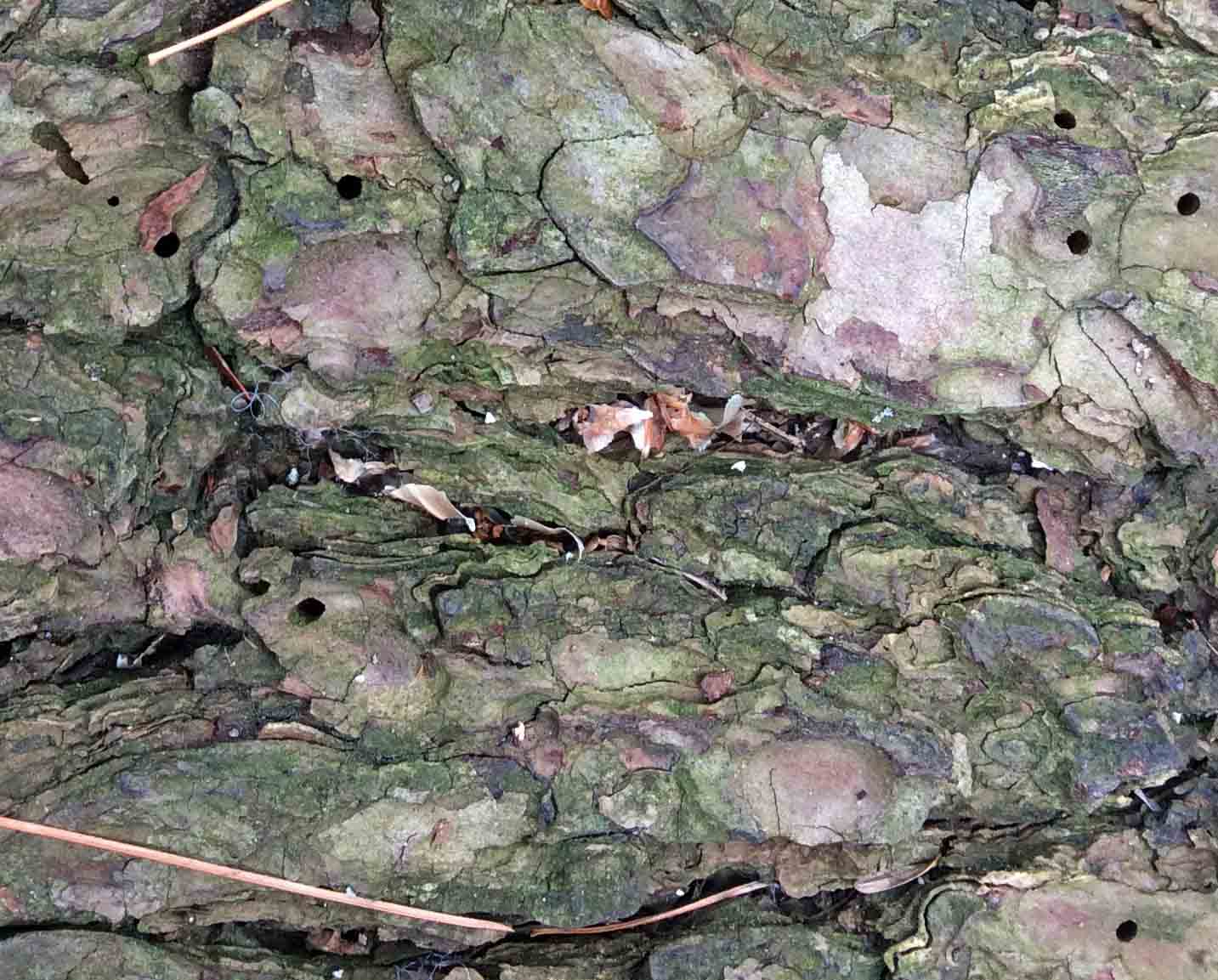








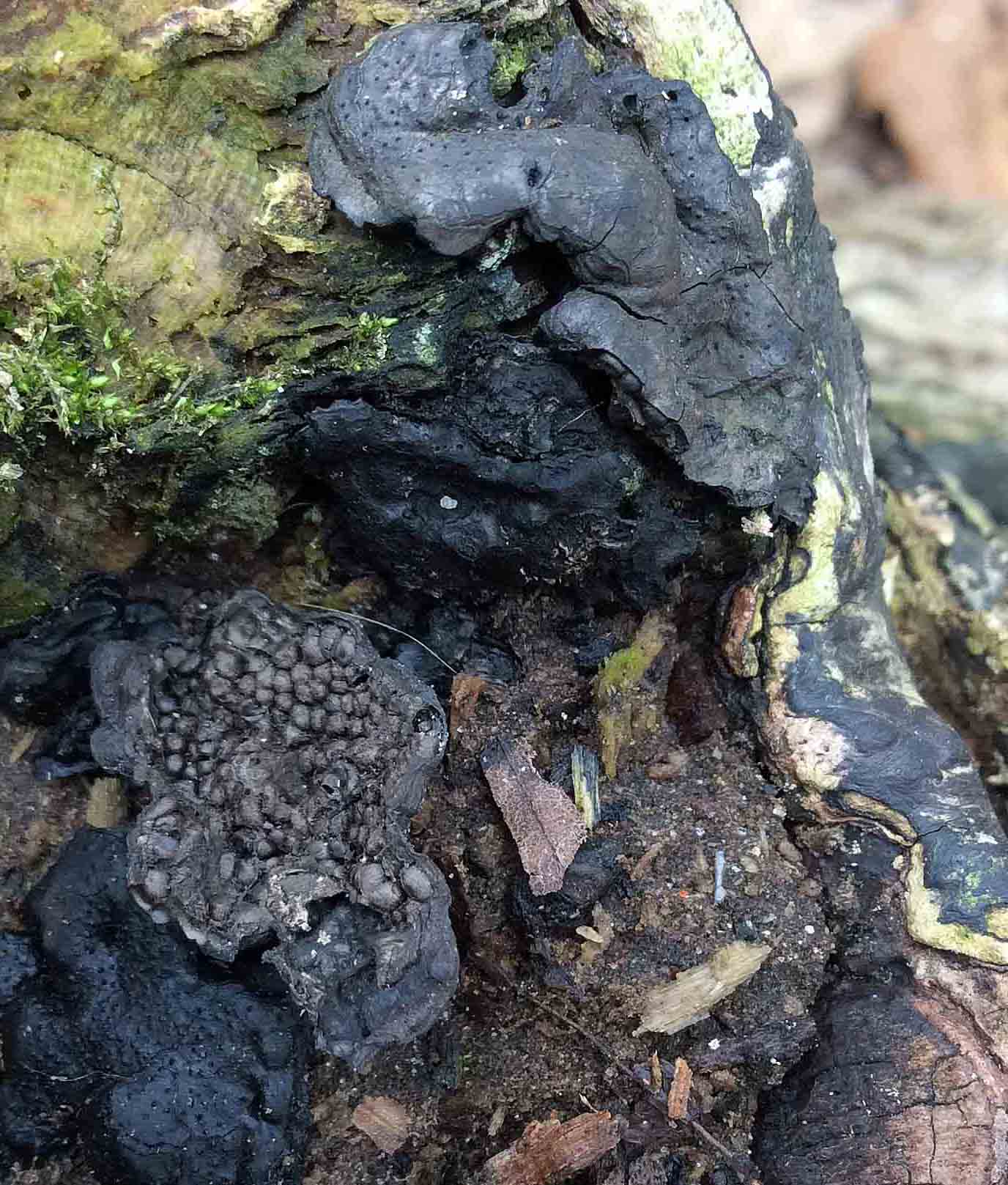










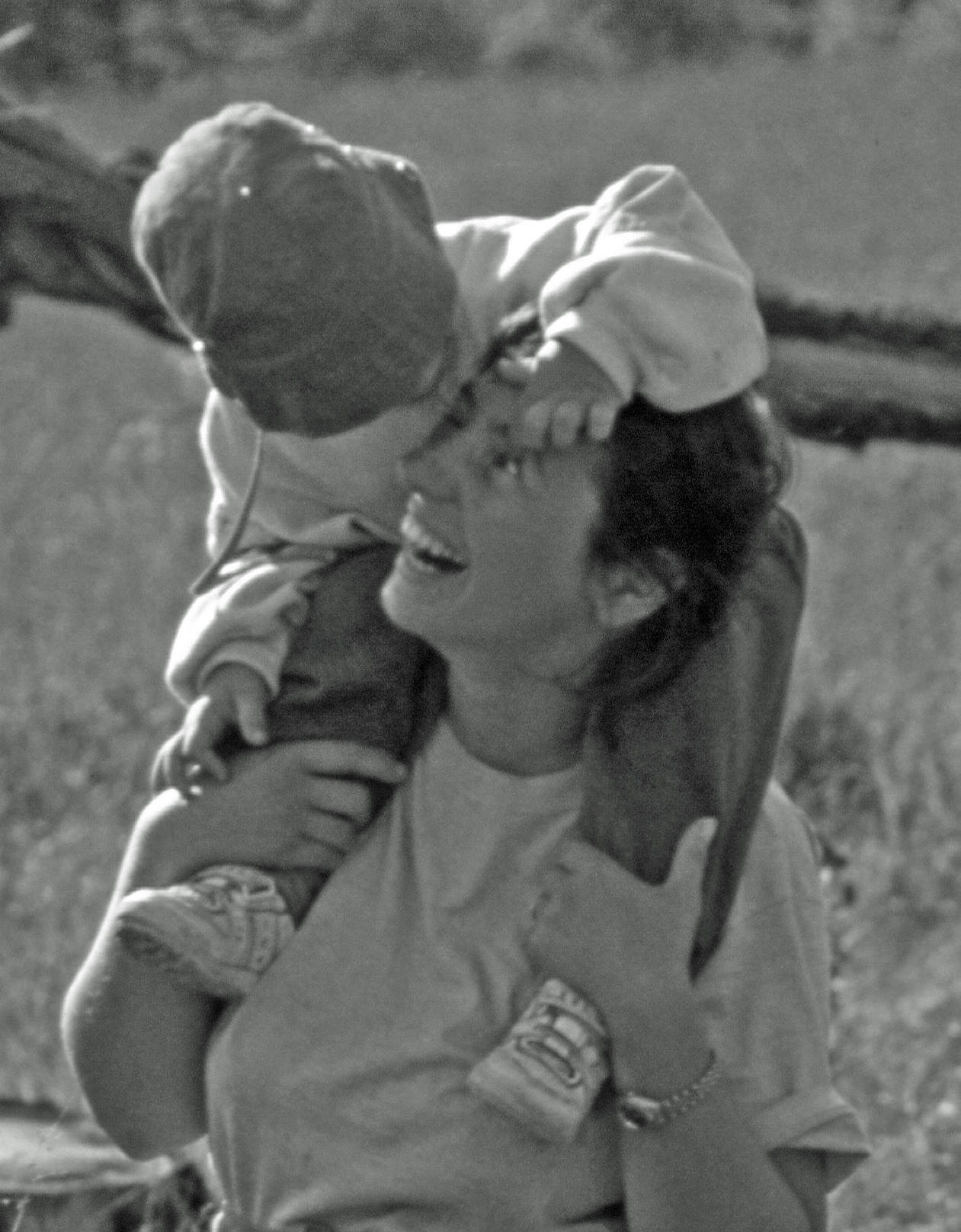



 *A version of this talk is available in an article I wrote called “Coming Home to Water,” which first appeared in the 2016 anthology In the Moment (A Hopeful Sign) edited by Gary Doi. It was reprinted in 2018 The Earth We Love (Mississauga Writers) edited by Elizabeth Banfalvi; and again in 2019 in The Literary Connection IV: Then and Now (IOWI) edited by Cheryl Antao Xavier.
*A version of this talk is available in an article I wrote called “Coming Home to Water,” which first appeared in the 2016 anthology In the Moment (A Hopeful Sign) edited by Gary Doi. It was reprinted in 2018 The Earth We Love (Mississauga Writers) edited by Elizabeth Banfalvi; and again in 2019 in The Literary Connection IV: Then and Now (IOWI) edited by Cheryl Antao Xavier.



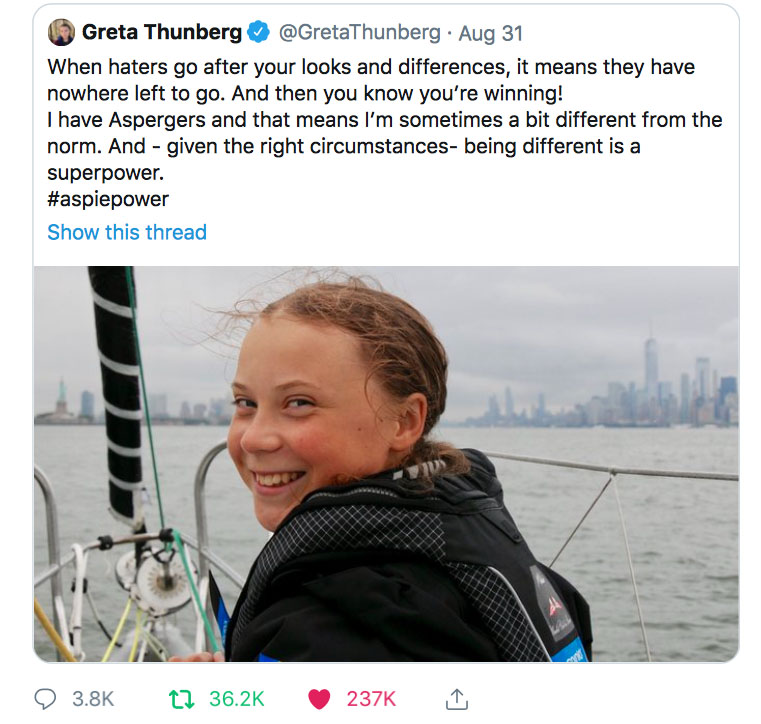





 I recently gave a 2-hour workshop on “ecology of story” at Calgary’s
I recently gave a 2-hour workshop on “ecology of story” at Calgary’s 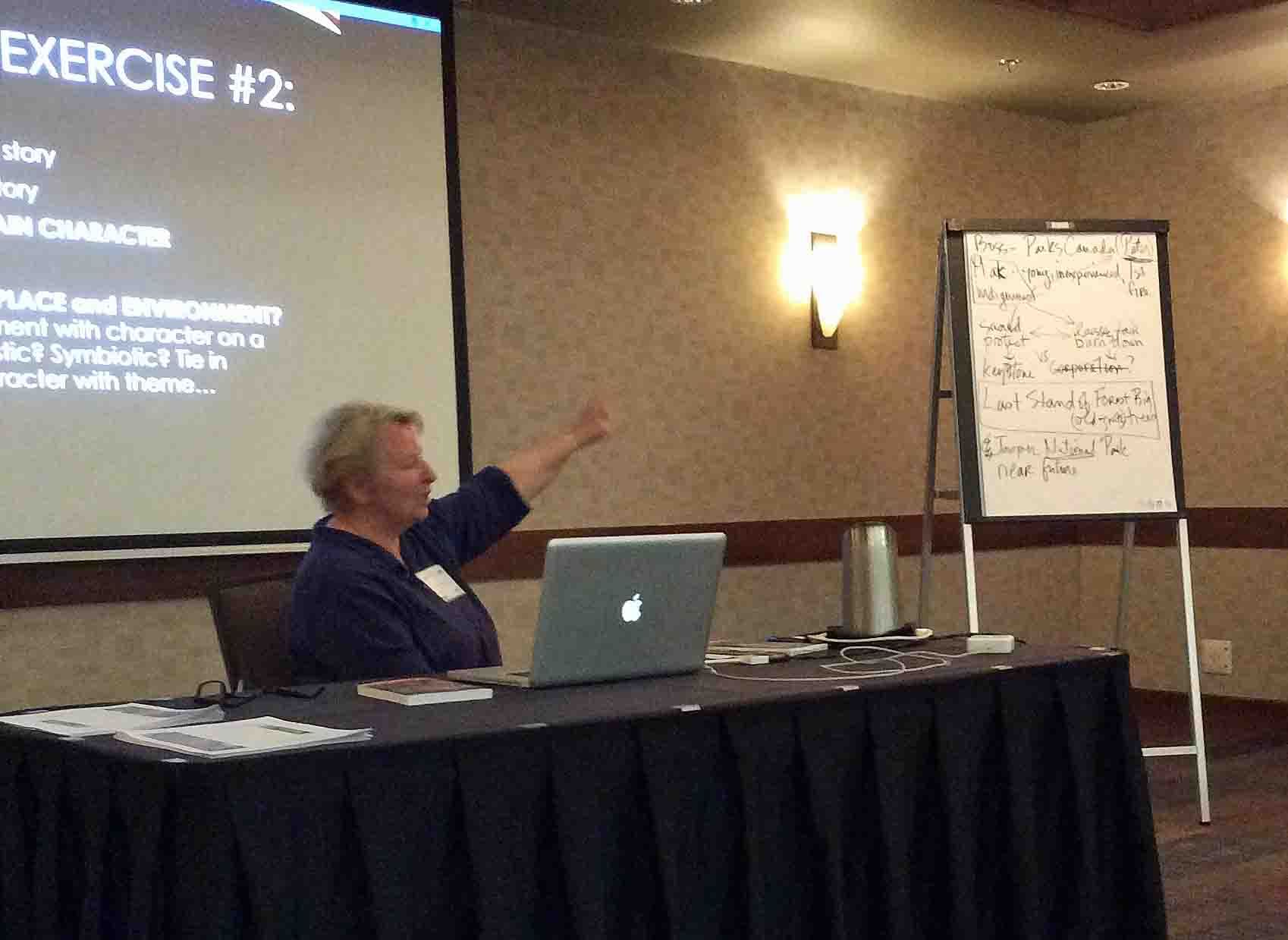


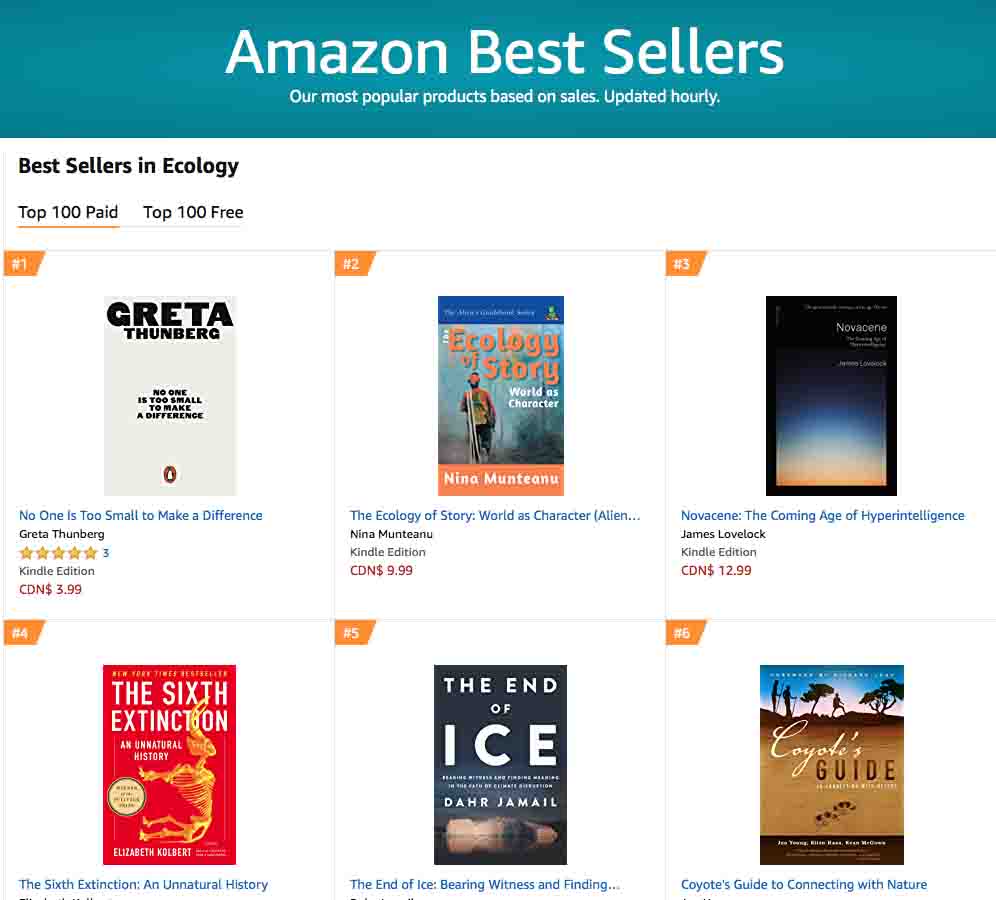



 Nina is a Canadian scientist and novelist. She worked for 25 years as an environmental consultant in the field of aquatic ecology and limnology, publishing papers and technical reports on water quality and impacts to aquatic systems. Nina has written over a dozen eco-fiction, science fiction and fantasy novels. An award-winning short story writer, and essayist, Nina currently lives in Toronto where she teaches writing at the University of Toronto and George Brown College. Her non-fiction book “Water Is…”—a scientific study and personal journey as limnologist, mother, teacher and environmentalist—was picked by Margaret Atwood in the New York Times as 2016 ‘The Year in Reading’. Nina’s most recent novel “A Diary in the Age of Water”— about four generations of women and their relationship to water in a rapidly changing world—will be released in 2020 by Inanna Publications.
Nina is a Canadian scientist and novelist. She worked for 25 years as an environmental consultant in the field of aquatic ecology and limnology, publishing papers and technical reports on water quality and impacts to aquatic systems. Nina has written over a dozen eco-fiction, science fiction and fantasy novels. An award-winning short story writer, and essayist, Nina currently lives in Toronto where she teaches writing at the University of Toronto and George Brown College. Her non-fiction book “Water Is…”—a scientific study and personal journey as limnologist, mother, teacher and environmentalist—was picked by Margaret Atwood in the New York Times as 2016 ‘The Year in Reading’. Nina’s most recent novel “A Diary in the Age of Water”— about four generations of women and their relationship to water in a rapidly changing world—will be released in 2020 by Inanna Publications.